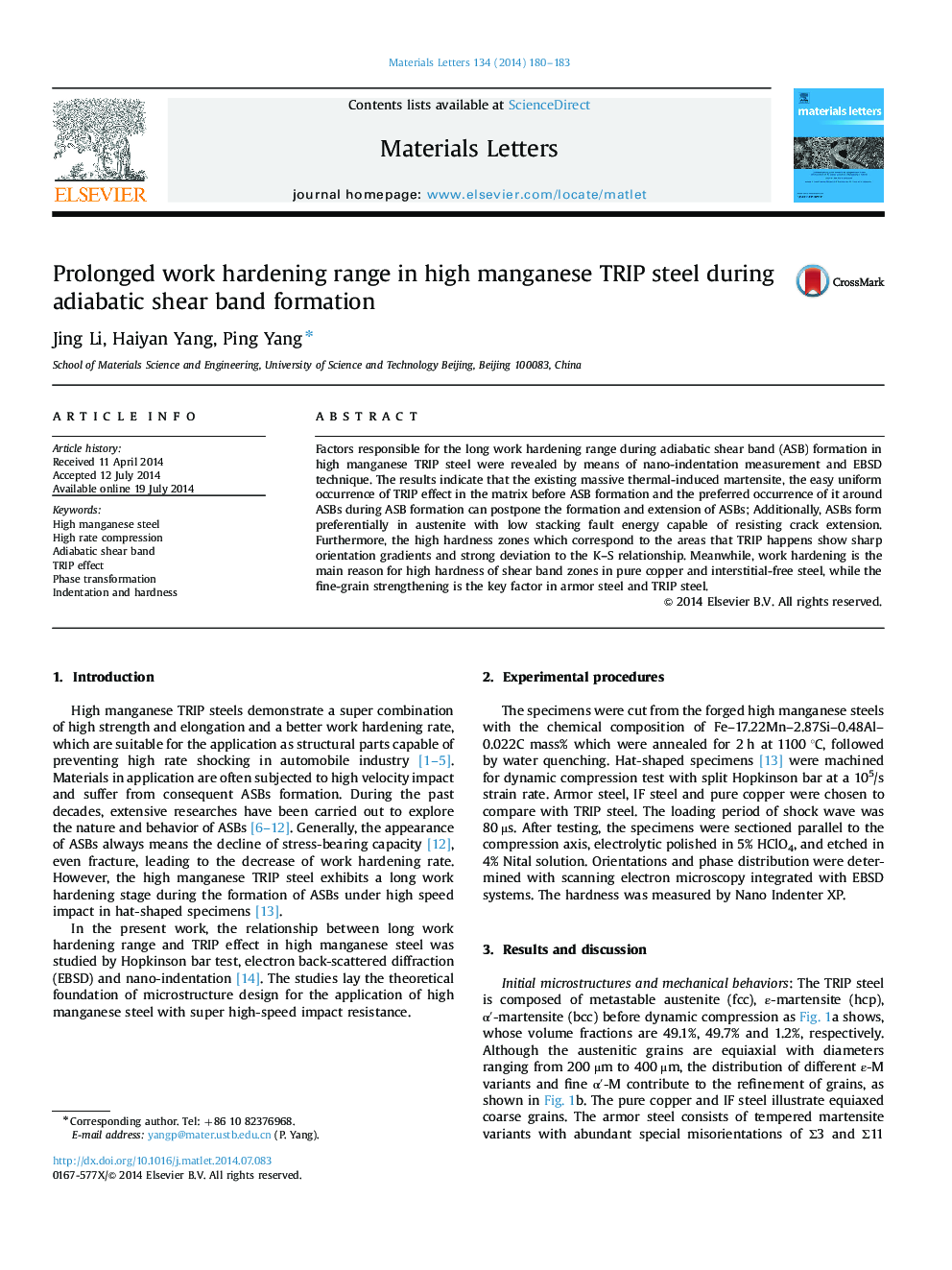| Article ID | Journal | Published Year | Pages | File Type |
|---|---|---|---|---|
| 8019616 | Materials Letters | 2014 | 4 Pages |
Abstract
Factors responsible for the long work hardening range during adiabatic shear band (ASB) formation in high manganese TRIP steel were revealed by means of nano-indentation measurement and EBSD technique. The results indicate that the existing massive thermal-induced martensite, the easy uniform occurrence of TRIP effect in the matrix before ASB formation and the preferred occurrence of it around ASBs during ASB formation can postpone the formation and extension of ASBs; Additionally, ASBs form preferentially in austenite with low stacking fault energy capable of resisting crack extension. Furthermore, the high hardness zones which correspond to the areas that TRIP happens show sharp orientation gradients and strong deviation to the K-S relationship. Meanwhile, work hardening is the main reason for high hardness of shear band zones in pure copper and interstitial-free steel, while the fine-grain strengthening is the key factor in armor steel and TRIP steel.
Keywords
Related Topics
Physical Sciences and Engineering
Materials Science
Nanotechnology
Authors
Jing Li, Haiyan Yang, Ping Yang,
